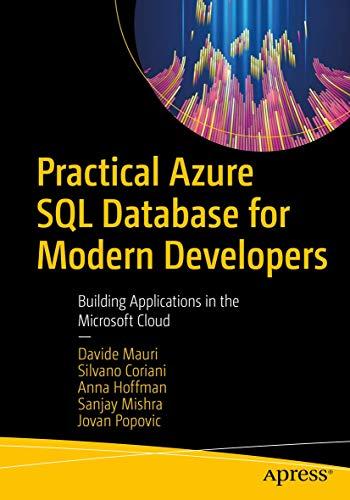Question
Case Study: Vignette Continued3 Larson Property Management Company is one of the largest property management companies in California, with more than 1,000 employees. The company
Case Study: Vignette Continued3
Larson Property Management Company is one of the largest property
management companies in California, with more than 1,000 employees. The
company provides a full array of commercial management and development
services. These activities include complete management services for
commercial office and retail buildings and apartment complexes;
construction, repair, and maintenance of commercial properties; and financial
management and billing services for commercial real estate clients. The
company has experienced significant expansion over the past five years in
response to the growth in apartment and commercial construction in southern
California, and this expansion has resulted in the need to hire a large number
of employees on an ongoing basis to staff its operations.
Larson Property Management has depended on a legacy HRIS to manage its
applicant and employee databases. The system runs on a client-server
computer system. The system was implemented approximately 10 years ago,
prior to the companys rapid growth and when it employed fewer than 100
employees. The systems functionality is limited to the storage and retrieval
of employee and applicant data. For recruiting purposes, the system requires
a clerk to manually enter basic applicant data, the results of the application
test, and whether or not an offer of employment has been made. Prior to this,
applicants files were passed around to those who reviewed the materials and
were sometimes misplaced, so trying to locate a particular applicants file
was often a problem. The current HRIS has limited file storage capability for
applicant and employee records and currently has reached its storage
capacity.
Larson Property Management has decided to replace its legacy HRIS. One
application module in the new HRIS that the company wants is a
sophisticated applicant-tracking system (ATS). The primary objective of the
ATS will be to provide a paperless hiring process. The basic functions of the
new system will be managing the requisition and approval of job openings,
storing resumes and job applications and retrieving through query functions
the names of applicants who match job requirements, tracking a candidates
progress through the recruiting and selection process, and providing
automated reporting functions. The companys managers also want an e-HR
functionality that includes the Internet posting of job openings through the
companys website and external job-posting services, application and resume
submission through the Web and through kiosks at various office locations,
staff ability to access and use the system remotely through a Web browser,
and online resume- and application-scanning capabilities.
Part of the design phase is modeling the processes that will be used in the
system for applicant tracking. For Larson Property Management, this
modeling will allow the system analysts to design an efficient paperless
hiring process.
Larson Property Management is well aware that the design stage of the
SDLC is critical for the successful implementation of the new ATS.
However, there is considerable confusion about how to proceed with this
phase. The HR and IT professionals assigned to the ATS committee have
been meeting to plan the new system. From their planning and needs
analysis, it is clear that a new HRIS application is needed, can save
considerable time, and can result in more accurate storage and retrieval of
applicant data for cost-benefit and other management reports.
The company has had several vendors provide presentations, with each
vendor outlining its particular approach to the design of an ATS. But these
presentations were primarily focused on the physical design of the new ATS.
The HR and IT committees must now begin the design process, which must
be completed in three months.
Case Study Questions
1. Based on the material in this chapter, design a three-month operational
plan for the ATS.
1. In your plan, make certain you differentiate between the logical and
physical design of the ATS. Which one should be done first?
Which one is more important?
2. Describe the importance of the data view versus the process view
for the design of the new ATS.
3. Who are the important stakeholders to be considered in the design
of the ATS?
4. How will you determine whether these stakeholders need the
information that the new ATS will deliver?
5. Based on your personal knowledge of recruiting by companies,
develop a DFD with at least two levels.
2. Based on the work you have completed for Question 1, provide a brief
outline of the RFP that is to be sent to the HRIS vendors.
Step by Step Solution
There are 3 Steps involved in it
Step: 1

Get Instant Access to Expert-Tailored Solutions
See step-by-step solutions with expert insights and AI powered tools for academic success
Step: 2

Step: 3

Ace Your Homework with AI
Get the answers you need in no time with our AI-driven, step-by-step assistance
Get Started


